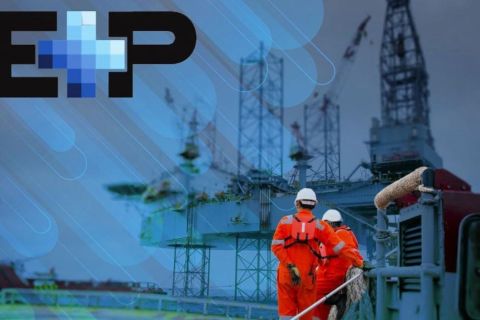
“Tech transfer is hard, and a lot of times we don’t do it well,” Lisa Grant, senior technical adviser for the Bureau of Safety and Environmental Enforcement, said during a session at OTC. (Source: Shutterstock)
Learn more about Hart Energy Conferences
Get our latest conference schedules, updates and insights straight to your inbox.
Technology transfer may sound easy to some, but it is not so simple.
Depending on the people in the room, the definition and what qualifies as successful tech transfer varies.
“Tech transfer is hard, and a lot of times we don’t do it well,” Lisa Grant, senior technical adviser for the Bureau of Safety and Environmental Enforcement (BSEE), said during a session at the Offshore Technology Conference (OTC).
“How often do we see that there was a widget that was invented over here that we didn’t discover for 10 years later” and wondered how it could’ve saved time or money?
She thinks about what stopped technology from becoming mainstream. Were people afraid to use it or just not know about it?
“If we come up with these great ideas, how do we really get it out there and make a change and move the needle?”
BSEE, working with the U.S. Department of Energy (DOE) and the Texas A&M Engineering Experiment Station, is trying to find the “special sauce” that enables effective technology transfer as part of their work with the Ocean Energy Safety Institute (OESI). The strategy covers foundational research with methods, models, technology and best practices; workforce development; novel methods focused on process, intellectual property, data for validation; and novel products focused on functional specification, performance validation and commercialization, according to an OTC presentation.
Technology transfer is a focus area for OESI, which brings together industry, national labs, non-governmental organizations and academia for collaborative research involving shared learning and dialogue.
In addition to strengthening U.S. energy security, OESI aims to “develop the technology and workforce needed for increased energy production that is safer, more sustainable and more cost-effective,” according to its website. Members and stakeholders collaborate to create technology and workforce development road maps in order to identify targets, as well as needs and gaps.
OESI awards several grants annually as it works to fulfill its objectives. With initiatives in marine, oil and gas and wind, OESI has cross-functional teams focused on safety and risk; data and digitization; system modeling and health monitoring; fluid-structure interaction in harsh environments; and environment and sustainability.
Finding synergies
The effort comes as more wind and marine energy operators join offshore oil and gas players. OESI members spoke about the program during a conference panel moderated by Faisal Khan, technical director for OESI at Texas A&M University.
OESI and its joint steering committee enable collaboration toward achieving synergies “so that we can further advance…research and help inform our budgets, as well to see the next steps where we need to go,” said Gabby Intihar, senior program manager for the DOE.
New ways of thinking can also include retrofitting techniques, processes and learnings from research coming out of wind energy, as one example, to other parts of the energy industry such as oil and gas, and vice versa, panelists agreed.
“This gives us a unique opportunity to be able to work across program offices in an area where we do have oil and gas, wind and marine,” Intihar said.
OESI aims to ensure spending and efforts are going toward areas that need it.
“We’re focusing on where we think that we can advance something, be the most successful and perhaps we can identify problems we didn’t even know existed because we weren’t operating or moving within those spheres,” Grant said. She added that includes being inspired by applications of technologies and techniques used by various energy sectors.
From an industry perspective, participation was a no-brainer, said Greg Kusinski, team lead regulatory affairs for Chevron Corp. He cited sharing best safety practices as an example.
“My competitor’s accident is ultimately my accident in a certain way because it [impacts Chevron’s] license to operate,” Kusinski said.
Operators and service companies often work together, but there is an opportunity to bring in more companies—particularly smaller and medium-sized firms, he added.
Seeking feedback
Panelists weren’t on stage simply to give their spiels. They wanted feedback.
Several session attendees chimed in at the microphone. A Baker Hughes Inc. employee pointed out that technology development at the university level should take into consideration how technology scales up, as well as the need to include industry partners.
OESI encourages academic institutions to have industry participants team up with academia to bring in their perspective early on, Kusinski said.
“Very often a question of ‘have you thought about it?’ is heard as ‘this is not going to work.’ Well, that’s not the purpose,” he said, later speaking to how OESI rates proposals. “One of the dimensions is cross-functionality of the team—its ability to address the complexity of the problem. But also, is the team broad enough or are they in their silos?”
Technology transfer goes beyond writing technical papers or delivering a conference speech. It involves ensuring that the targeted parties know that the work exists, Kusinski said.
Another attendee, a transplant surgeon, likened technology transfer to a handshake: there must be some pressure— environmental or social—to move in a certain direction.
“Both legacy systems have to shake hands with the new systems, but sometimes the hands are not clean. So, entities have to wash their hands and make sure that the handshake is clean,” the attendee said. “That’s where science comes in and that’s where technology is so imperative.”
The societal impact and technology’s prior footprint must be taken into consideration, he said. “They have to redefine movement forward so that the impact and the benefits that we created overwhelm some of the challenges and difficulties that were in the past.”
Kusinski said OESI took a valuable first step when it worked to define problems worth solving with its creation of roadmaps, which took about a year and a half to develop.
“Those well-defined challenges seek proposals that partially, holistically [and] incrementally can address the issues,” he said.
Recommended Reading
Deepwater Roundup 2024: Offshore Africa
2024-04-02 - Offshore Africa, new projects are progressing, with a number of high-reserve offshore developments being planned in countries not typically known for deepwater activity, such as Phase 2 of the Baleine project on the Ivory Coast.
E&P Highlights: Feb. 26, 2024
2024-02-26 - Here’s a roundup of the latest E&P headlines, including interest in some projects changing hands and new contract awards.
E&P Highlights: Jan. 29, 2024
2024-01-29 - Here’s a roundup of the latest E&P headlines, including activity at the Ichthys Field offshore Australia and new contract awards.
Shell Taps TechnipFMC for 20K System for Sparta
2024-02-19 - The deepwater greenfield project in the Gulf of Mexico targets reserves in the high-pressure Paleogene reservoir.
E&P Highlights: April 1, 2024
2024-04-01 - Here’s a roundup of the latest E&P headlines, including new contract awards.






